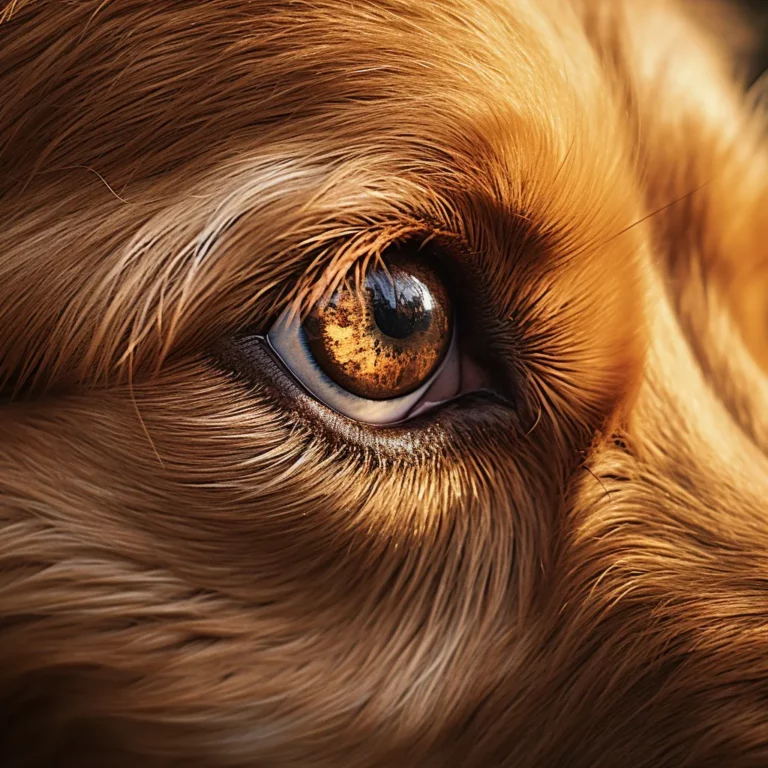How Big Does a Golden Retriever Get? A Guide To Size and Growth Expectations
As you watch your Golden Retriever pup grow, you might be wondering, “How big does a Golden Retriever get?” Knowing their growth timeline and final size can assist in proper feeding, care, and preparation for the space they’ll need.
Overview
Golden Retrievers are medium-large dogs with a sturdy build and broad heads. They usually have a thick, double-layered coat that comes in shades of gold or cream. This breed is known for being active and playful, so they require regular exercise to stay healthy.
Golden Retrievers also have an incredibly friendly disposition with humans and animals alike. They make great family pets because of their social nature and love for attention.
Importance of Understanding Size and Growth
Knowing your Golden Retriever’s size and growth expectations is crucial for providing appropriate care throughout their life. Puppies may need different types (and amounts) of food than adult dogs to support healthy growth. Additionally, you may need to adjust exercise needs based on your dog’s age or size.
By understanding how big your dog will get over time, you’ll be able to plan accordingly for things like crate training or purchasing collars/harnesses that fit comfortably. Plus, keeping an eye on your dog’s weight can help prevent health issues down the road.
Average Size and Growth
Golden Retrievers are a medium to large breed, with males generally being larger than females. According to the American Kennel Club (AKC), the average height for males is 23-24 inches at the shoulder, while females are slightly shorter at 21.5-22.5 inches.
The average weight for males is typically between 65-75 pounds, while females weigh slightly less at 55-65 pounds. The growth timeline for Golden Retrievers varies depending on the individual dog.
In general, they reach their full height by around one year of age and their full weight by around two years of age. During this time, it’s important to monitor your puppy’s growth through regular check-ups with your veterinarian.
Genetics play a significant role in determining a Golden Retriever’s size and growth rate. If both parents are large or small, there’s a good chance their offspring will be as well.
However, it’s not always possible to predict exactly how big a puppy will grow based on its parents’ size alone. Nutrition also plays an important role in the growth and development of Golden Retrievers.
Puppies require high-quality food that is specifically formulated for their developmental stage to ensure they receive all of the necessary nutrients for healthy growth. It’s important to note that while breed standards provide general guidelines for size and weight ranges, individual dogs may fall outside these ranges without any negative impact on their health or well-being.
Height and Weight Ranges for Males and Females
As previously mentioned, male Golden Retrievers typically stand between 23-24 inches tall at the shoulder and weigh between 65-75 pounds. Female Golden Retrievers are slightly smaller, standing between 21.5-22.5 inches tall at the shoulder and weighing between 55-65 pounds.
While these ranges provide a general idea of what to expect, it’s important to remember that individual dogs may fall outside of these ranges without any negative impact on their health. Some males may be smaller than average, while some females may be larger than average.
Growth Timeline from Puppyhood to Adulthood
Golden Retriever puppies go through several stages of growth and development before reaching adulthood. During the first few months of life, puppies experience rapid growth and require a diet that is high in protein and fat to support this growth.
Around six months of age, puppies will begin to slow down in terms of growth rate. This is also when their energy requirements will decrease slightly, so it’s important to adjust their diet accordingly.
By around one year of age, most Golden Retrievers will have reached their full height. However, they may continue to fill out and gain muscle mass until they are around two years old.
Factors That Can Affect Growth
As previously mentioned, genetics play a significant role in determining a Golden Retriever’s size and growth rate. Other factors that can affect growth include nutrition, exercise level, and overall health. Feeding your puppy a high-quality diet that is specifically formulated for their developmental stage is crucial for healthy growth.
Providing plenty of opportunities for exercise and mental stimulation can also promote healthy development. Ensuring your puppy receives regular veterinary check-ups can help identify any potential health issues that could impact their growth or development.
Small Details That Affect Size
Differences between American and British Golden Retrievers
When it comes to Golden Retrievers, there are two distinct types: American and British. American Golden Retrievers tend to be lankier and taller than their British counterparts.
They typically weigh between 65-75 pounds while standing 23-24 inches at the shoulder. On the other hand, British Golden Retrievers are shorter and stockier with a broader head and more muscular build.
They generally weigh between 60-75 pounds while standing 20-22 inches tall. The difference in size can be attributed to breeding goals.
American breeders focused on creating a dog that excelled in field trials, emphasizing height and speed. In contrast, British breeders aimed for a dog that was versatile enough to perform well in both field trials and conformation shows, placing more emphasis on conformation standards such as coat type, head shape, and overall balance.
How Coat Color Can Impact Size
The color of a Golden Retriever’s coat has no direct correlation with its size; however, some breeders claim that lighter-colored dogs tend to be smaller than darker dogs. This theory is not scientifically proven but is widely accepted among some breeders.
It’s important to note that coat color should never be the main factor when choosing a puppy since it doesn’t guarantee any specific traits or characteristics other than color itself. Instead, potential owners should consider the temperament, health history, and overall suitability of the puppy for their lifestyle.
The Role of Gender in Determining Size
Gender plays a significant role when it comes to determining the adult size of your Golden Retriever. Male Goldens are generally larger than females; males weigh anywhere from 65-75 pounds while females weigh around 55-65 pounds on average.
However, it’s not just the weight that differs between genders. Males have broader heads and a more muscular build, while females tend to be more slender with narrower head.
Additionally, males may have a more prominent mane than females due to their thicker fur around the neck area. It’s important to note that there can be individual variation within each gender, and other factors such as genetics and nutrition can also significantly impact the size of your Golden Retriever.
Miniature Golden Retrievers: Are they real?
There is no such thing as a true miniature Golden Retriever breed recognized by the American Kennel Club (AKC). Some breeders may claim to offer miniature Goldens, but these dogs are typically mixed breeds or smaller versions of other breeds like Cocker Spaniels or Poodles.
It’s essential to do your research and ensure that you’re working with a reputable breeder when considering adding any new puppy to your family. Make sure you ask questions about their breeding program, health testing, and any other concerns you may have before making a commitment.
How to predict the adult size of a Golden Retriever puppy
Predicting the adult size of your Golden Retriever puppy can be challenging since many factors contribute to its growth rate. However, there are some general guidelines you can follow based on their age and weight.
For instance, at eight weeks old, most puppies weigh around 10 pounds and will double their weight by four months old. At six months old, they should weigh approximately 55% of their expected adult weight.
By one year old, most Goldens reach 80% of their expected adult weight. The best way to predict your dog’s size is by knowing both parents’ weights since genetics plays an essential role in determining an individual dog’s growth pattern.
Niche Subtopics on Golden Retriever Size
Miniature Golden Retrievers: Are they real?
There is a lot of debate surrounding whether Miniature Golden Retrievers are an actual breed or not. Some breeders claim to have bred them down to a smaller size, but there is no official recognition of this as a distinct breed from the American Kennel Club or other major organizations. While some dogs may be advertised as Miniature Golden Retrievers, it is important to do thorough research before purchasing one.
These dogs may suffer from health issues due to irresponsible breeding practices or may not actually be purebred Golden Retrievers at all. If you are looking for a smaller dog that still has many of the lovely traits of a Golden Retriever, consider breeds like the Cocker Spaniel or the Cavalier King Charles Spaniel which can often resemble smaller versions of Goldens in appearance and temperament.
How to predict the adult size of a Golden Retriever puppy
Predicting how big your Golden Retriever will grow can be tricky. However, there are some factors that can give you an idea of what to expect.
First and foremost, genetics plays a large role in determining not only their overall size but also their individual proportions such as leg length and body shape. You can ask your breeder about the average size range for their previous litters’ puppies as well as the sizes of both parents.
Additionally, look at your puppy’s paw pads – larger pads tend to indicate that they will grow into larger dogs. Another factor that can influence growth is nutrition.
Puppies need high-quality food specifically formulated for their developmental needs in order to grow properly and reach their full potential size-wise. It is important to note that while you may have some rough estimate about your puppy’s eventual size, it is impossible to know for sure until they have fully matured.
The impact of spaying/neutering on growth
There is some evidence to suggest that early spaying or neutering can affect the growth patterns of Golden Retrievers. According to some studies, dogs who were spayed or neutered before six months of age had a higher likelihood of being overweight or obese as adults. This may be due to hormonal changes that interrupt normal growth patterns during critical stages in the dog’s development.
However, it is important to note that not all studies have found this link and more research needs to be done in order to fully understand the impact of spaying and neutering on Golden Retriever growth. If you do decide to spay or neuter your Golden Retriever, talk to your veterinarian about the best timing for the procedure.
In general, waiting until your dog has reached sexual maturity (around 6-12 months) may help minimize any potential negative effects on growth. Overall, while there are many factors that can influence a Golden Retriever’s size and growth, with proper care and attention they can reach their full potential and make wonderful companions for years to come.
High-Level Overview on Health Concerns
Golden Retrievers are generally a healthy breed, but their size can impact their health in various ways. Being too small or too large can lead to several health issues that owners should be aware of. It’s important to maintain a healthy weight for your dog and ensure they receive regular check-ups from a veterinarian.
Health Issues Associated with Being Too Small or Too Large
Being too small can make your Golden Retriever more prone to cold weather injuries, as well as bone fractures and dislocations. They may also be more susceptible to hypoglycemia due to low blood sugar levels.
Additionally, smaller dogs tend to have a shorter lifespan compared to larger dogs. On the other hand, being too large can also lead to health problems such as joint issues, back pain, and heart disease.
Large dogs are at risk for developing hip dysplasia, which is a condition where the hip socket doesn’t properly fit into the thigh bone. Obesity is another common problem in large breeds like Golden Retrievers and can lead to various health complications such as diabetes, arthritis, and respiratory issues.
How To Maintain A Healthy Weight for Your Dog
Maintaining a healthy weight is essential for your dog’s overall well-being. A balanced diet that’s rich in essential nutrients is crucial for proper growth and development.
Avoid feeding your dog table scraps or overfeeding them treats as this will contribute significantly towards weight gain. It’s important also that you exercise your Golden Retriever regularly by going on walks or playing games with them at home.
Exercise helps burn excess calories and keeps muscles toned which aids in weight management. Consider reducing meal sizes if you notice your Golden Retriever gaining some extra pounds over time since overweight dogs may not live long enough due to various diseases associated with obesity like cancer, arthritis, and diabetes.
The Importance of Regular Vet Check-Ups
Regular vet check-ups are a critical aspect of keeping your Golden Retriever healthy and happy. These check-ups help identify any health problems early on, which makes treatment easier and more effective. During these check-ups, the veterinarian will examine your dog’s physical condition looking for signs of illness such as unusual lumps or bumps, infections, or skin allergies.
They may also perform blood tests to screen for underlying health problems that may not be visible on the outside. It’s essential to keep track of your Golden Retriever’s size and growth expectations as they can greatly impact their overall health.
Owners should strive to maintain a healthy weight through diet and exercise while also ensuring regular check-ups with their veterinarian to catch any potential health issues early on. By taking care of your Golden Retriever properly, you can ensure they live a long and healthy life with you by their side!
Conclusion
Understanding the size and growth expectations of your Golden Retriever is essential for ensuring its overall health and well-being. Taking into account factors such as genetics, nutrition, and gender can help you predict what size your Golden Retriever will be as an adult.
Additionally, paying attention to subtle details like coat color and differences between American and British Golden Retrievers can also affect their size. It is important to remember that while there are general guidelines for the average size of a Golden Retriever, individual dogs may vary in size based on their genetics.
Regular check-ups with a veterinarian can help ensure that your dog is growing at a healthy rate and that any potential issues are caught early. To ensure your Golden Retriever grows up healthy, make sure to provide them with proper nutrition through a balanced diet.
Avoid overfeeding or underfeeding your dog as this can lead to health problems such as obesity or malnutrition. Implementing regular exercise routines can also keep your dog fit and maintain their optimal weight.
In addition to proper nutrition and exercise, make sure to give your Golden Retriever plenty of love and attention throughout its life. Mental stimulation through activities such as training or playtime can keep them happy and engaged.
Overall, understanding the size and growth expectations of your Golden Retriever is an important aspect of responsible pet ownership. By providing them with proper care throughout their life, you can help ensure they grow up healthy and happy members of your family.






